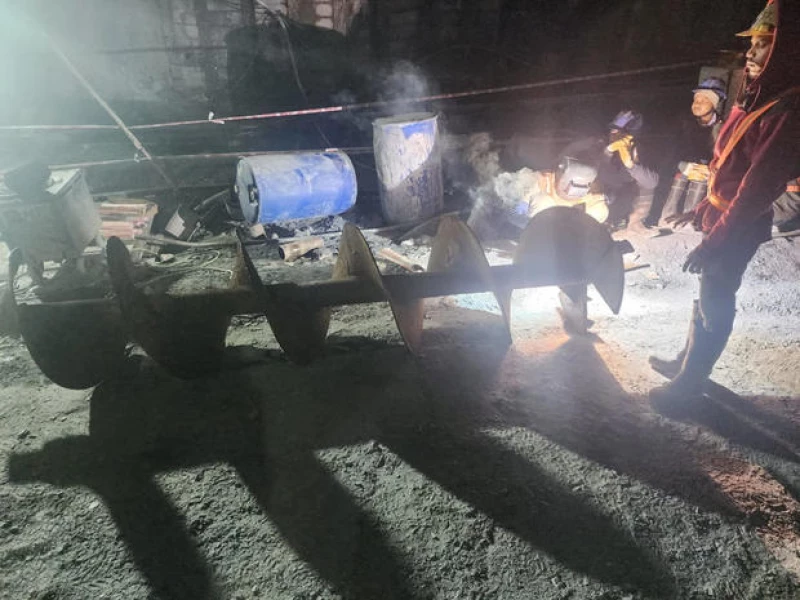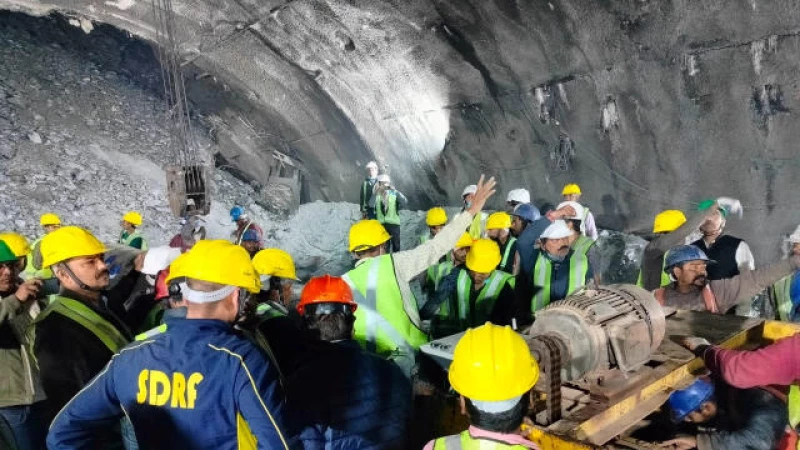Rescue Efforts Intensify as 40 Workers Remain Trapped in Collapsed Tunnel in India
New Delhi — A race against time is underway as rescue workers in India's Uttarakhand state battle to reach 40 workers who have been trapped for three days in an under-construction tunnel that partially collapsed. The workers were left stranded in the tunnel after a partial collapse occurred early on Sunday, but officials have assured that they are safe and being provided with food, water, and oxygen through a pipe.
The incident occurred at around 5:30 a.m. local time on Sunday, when part of the three-mile highway tunnel caved in. Despite the swift response of rescue workers, who used large excavators to clear the debris, the unstable terrain continued to pose challenges. The constant falling of debris prevented the machines from creating a viable escape route.
Mohsen Shahidi, a senior officer from the National Disaster Response Force, acknowledged the difficulties faced by the rescue team. "This is a very challenging job because as we clear debris, more debris is falling from the ceiling, so we are also trying to stop that by using cement," he stated, as quoted by India's national ANI news agency.
The rescue operation has been further hampered by the treacherous conditions inside the tunnel. The unstable terrain and the ongoing risk of further collapses have forced rescue workers to proceed with caution. However, they remain determined to reach the trapped workers as quickly and safely as possible.
Authorities have assured the public that all necessary measures are being taken to ensure the well-being of the trapped workers. In addition to the supply of essential provisions, experts are closely monitoring the situation and providing guidance to the rescue team.
The incident has once again highlighted the dangers faced by workers in the construction industry. Safety standards and precautions must be rigorously enforced to prevent such incidents from occurring in the future. As the rescue efforts continue, the thoughts and prayers of the nation are with the trapped workers and their families.

On Tuesday, the rescue team made a decision to change their approach. They began boring horizontally through the debris, inserting a large steel pipe that would serve as an escape route for the trapped workers. The pipe, approximately one yard in diameter, would allow the workers to crawl through and reach safety.
Throughout Tuesday evening, the drilling machine continued its work, tearing through the debris pile. This tactic, known as trenchless tunnelling, was chosen to minimize the risk of further collapses and structural instability. Unlike traditional excavation methods, trenchless tunnelling does not involve significant earth removal.
The rescue workers stated that it was difficult to determine exactly how long it would take to complete the escape pipe.
The cause of the initial tunnel collapse remained unknown, prompting federal Indian authorities to assemble a team of experts to investigate the accident.

The construction of the road tunnel, connecting the towns of Silkyara and Dandalgaon, began in 2018. Originally scheduled for completion last year, the project faced numerous delays.
The tunnel is a crucial component of the Char Dham highway, a federal government infrastructure initiative aimed at improving transportation between four important Hindu pilgrimage sites in the northern Himalayan region of India.
The project has faced criticism, particularly regarding the damage caused to hundreds of houses along the construction route due to subsidence.
Environmental experts have raised concerns about the potential impact of large-scale infrastructure projects in the ecologically sensitive Himalayan region. This region is known for its vulnerability to earthquakes, landslides, and flooding, making it a risky area for such development.







